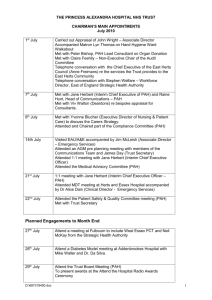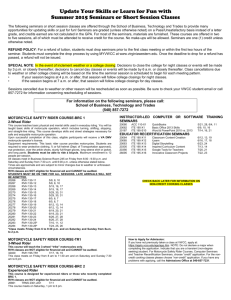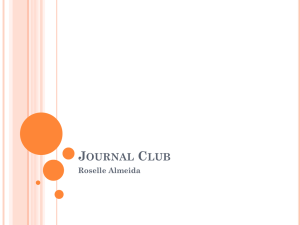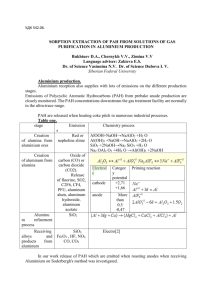Summer Project 1
advertisement
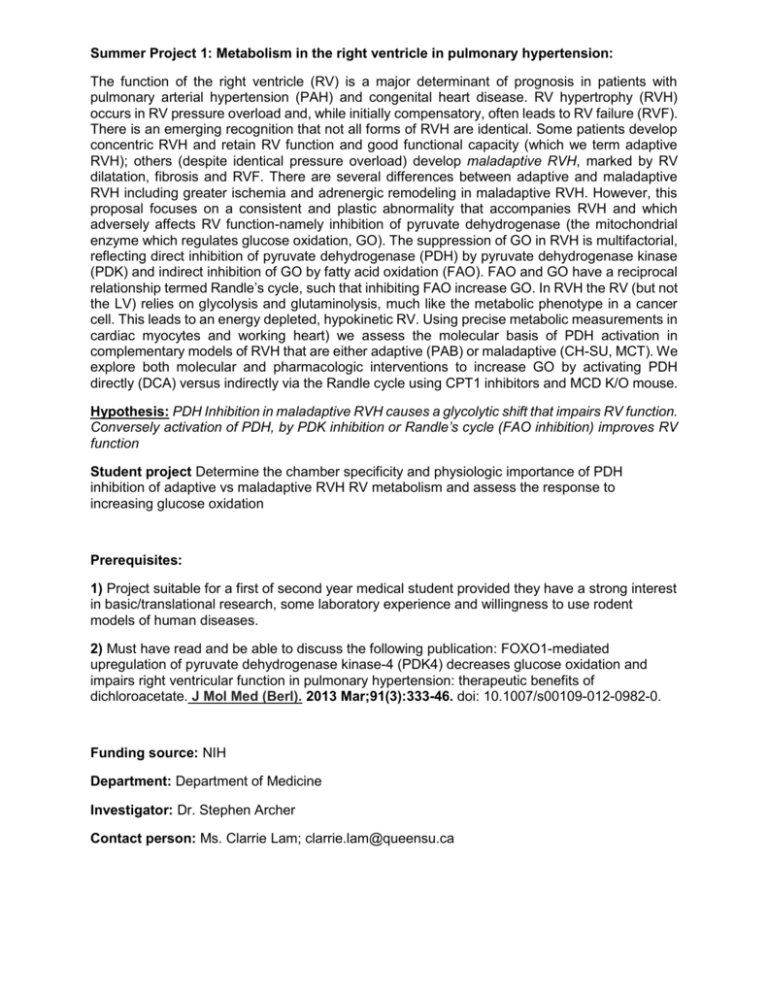
Summer Project 1: Metabolism in the right ventricle in pulmonary hypertension: The function of the right ventricle (RV) is a major determinant of prognosis in patients with pulmonary arterial hypertension (PAH) and congenital heart disease. RV hypertrophy (RVH) occurs in RV pressure overload and, while initially compensatory, often leads to RV failure (RVF). There is an emerging recognition that not all forms of RVH are identical. Some patients develop concentric RVH and retain RV function and good functional capacity (which we term adaptive RVH); others (despite identical pressure overload) develop maladaptive RVH, marked by RV dilatation, fibrosis and RVF. There are several differences between adaptive and maladaptive RVH including greater ischemia and adrenergic remodeling in maladaptive RVH. However, this proposal focuses on a consistent and plastic abnormality that accompanies RVH and which adversely affects RV function-namely inhibition of pyruvate dehydrogenase (the mitochondrial enzyme which regulates glucose oxidation, GO). The suppression of GO in RVH is multifactorial, reflecting direct inhibition of pyruvate dehydrogenase (PDH) by pyruvate dehydrogenase kinase (PDK) and indirect inhibition of GO by fatty acid oxidation (FAO). FAO and GO have a reciprocal relationship termed Randle’s cycle, such that inhibiting FAO increase GO. In RVH the RV (but not the LV) relies on glycolysis and glutaminolysis, much like the metabolic phenotype in a cancer cell. This leads to an energy depleted, hypokinetic RV. Using precise metabolic measurements in cardiac myocytes and working heart) we assess the molecular basis of PDH activation in complementary models of RVH that are either adaptive (PAB) or maladaptive (CH-SU, MCT). We explore both molecular and pharmacologic interventions to increase GO by activating PDH directly (DCA) versus indirectly via the Randle cycle using CPT1 inhibitors and MCD K/O mouse. Hypothesis: PDH Inhibition in maladaptive RVH causes a glycolytic shift that impairs RV function. Conversely activation of PDH, by PDK inhibition or Randle’s cycle (FAO inhibition) improves RV function Student project Determine the chamber specificity and physiologic importance of PDH inhibition of adaptive vs maladaptive RVH RV metabolism and assess the response to increasing glucose oxidation Prerequisites: 1) Project suitable for a first of second year medical student provided they have a strong interest in basic/translational research, some laboratory experience and willingness to use rodent models of human diseases. 2) Must have read and be able to discuss the following publication: FOXO1-mediated upregulation of pyruvate dehydrogenase kinase-4 (PDK4) decreases glucose oxidation and impairs right ventricular function in pulmonary hypertension: therapeutic benefits of dichloroacetate. J Mol Med (Berl). 2013 Mar;91(3):333-46. doi: 10.1007/s00109-012-0982-0. Funding source: NIH Department: Department of Medicine Investigator: Dr. Stephen Archer Contact person: Ms. Clarrie Lam; clarrie.lam@queensu.ca Summer Project 2: Mitochondrial fission in pulmonary hypertension: Pulmonary arterial hypertension (PAH) is a disease of the lung’s blood vessels caused in part by excessive rates of vascular growth, leading to vascular obstruction. This places a strain on the right heart, causing disability and a 15% annual death rate due to right heart failure. We identified a mitochondrial abnormality in human PAH smooth muscle cells that causes them to grow rapidly, contributing to the blockage. In PAH the mitochondrial network is fragmented, a process called “fission”. Excess fission reflects increased activity of an enzyme called dynamin related protein (DRP-1). Inhibiting DRP-1 slows cell growth and reduces experimental PAH. We will define the cause of increased fission in PAH and explore a link between fission and mitosis that relates to a shared regulatory kinase, CDK1. Increased fission may present an Achilles heel for rapidly growing cells. The therapeutic potential of anti-fission drugs is tested in human PAH tissues/cells and in rodent models. This project is innovative in recognizing that “mitochondrial checkpoints”, related to DRP-1 activation and fission, regulate cell cycle progression. The concept that mitochondrial fission is tightly linked to cell cycle progression via shared regulatory kinases is also novel. The discovery that inhibiting DRP-1 (directly or by targeting its regulatory kinases) is antiproliferative offers a new, “antifission-profusion”, therapeutic paradigm for PAH. The translational potential of this proposal is enhanced by careful correlation of results in rodent PAH models with findings in human PAH lungs/cells from a well-characterized cohort. Hypothesis: DRP-1 inhibition prevents cell cycle progression, causing G2-M phase arrest. Antifission therapies may constitute an antiproliferative therapy for PAH. Student project: Determine whether inhibition of mitochondrial fission have therapeutic benefit in experimental PAH? RVH RV metabolism and assess the response to increasing glucose oxidation Prerequisites: 1) Project suitable for a first of second year medical student provided they have a strong interest in basic/translational research, some laboratory experience and willingness to use rodent models of human diseases. 2) Must have read and be able to discuss the following publication: Mitochondrial Dynamics — Mitochondrial Fission and Fusion in Human Diseases N Engl J Med 2013;369:2236-51. Funding source: NIH Department: Department of Medicine Investigator: Dr. Stephen Archer Contact person: Ms. Clarrie Lam; clarrie.lam@queensu.ca


